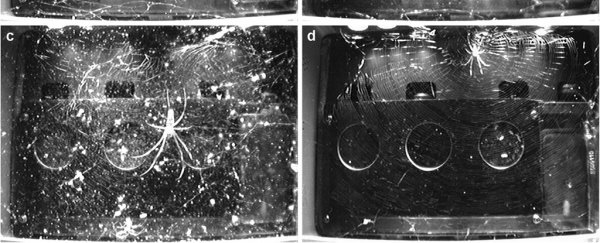With impressively large webs and stunning colours on female spiders, golden silk orb-weavers aren't just cool - they've also been an incredible help to science, with their silk even being investigated as a biomaterial to reconstruct nerves.
Now, a study of orb spiders (Trichonephila clavipes) in space has revealed that these smart arachnids can orientate themselves with light when there is no gravity to tell them which way is 'up'.
Scientists have conducted myriad spider gravity experiments over the decades. Spiders have had small weights attached to them, been put in a centrifuge, been made to build their webs horizontally (which the spiders were reportedly very unimpressed about), and continuously rotated as they tried to build a web.
"These observations and experiments strongly suggest that gravity is an important factor during web building, but they cannot answer the question, whether spiders can build webs in zero gravity and, if yes, how the zero-gravity environment will affect the completed web," a team of researchers from Switzerland and the United States writes in a new paper.
"These questions can only be answered by bringing spiders into a zero-gravity environment, i.e. by bringing spiders into space."
The newly published study isn't the first time spiders have been sent into space, but it is the first time we've had such conclusive results, because past experiments with space-faring spiders have had some mishaps.
All the way back in 1973, two European garden spiders (Araneus diadematus) went to space in the first US space station Skylab, as part of NASA Skylab Student Experiment Competition. No photographs were taken of the whole webs, and the spiders weren't given food or water - so their web irregularities could have been due to loss of condition.
In 2008, an experiment on the International Space Station (ISS) used two species of orb-weaver spiders – one for the study, and one in a separate chamber as a back-up - and this time, the scientists did set them up with food, in the form of fruit fly colonies.
But in what can only be described as a worst-case scenario, the back-up spider escaped into the main chamber, which meant the two webs interfered with each other, and then the fruit flies multiplied too quickly for the two spiders to keep the population under control.
According to the researchers, "the fruit fly larvae and pupae started covering up the observation window about two weeks after the launch. After approximately one month, they had completely covered the viewing window, making it impossible to see the spiders."
But the researchers managed to get a second chance for their experiment in 2011, and took it. This time, there were no spider escapes, missing photographs, or fruit fly explosions.
Instead, a photograph of the golden orb-weavers' webs was taken every five minutes, while lights overhead switched on and off every twelve hours to simulate daylight.
Although there was one mishap (two of the four alleged females were found to be males), the results of the two-month experiment on the ISS were incredibly successful.
The two spiders which were sent to space were quite hardy in their new gravity-free homes: The male survived zero gravity for 65 days and was still alive after returning to Earth, while the female built 34 webs and moulted three times – both of which are space records.
But it was the use of the lights, which were all pointing 'down', that actually led to a surprising discovery.
"Since in normal gravity, and no matter whether the lights were on or not, spiders consistently built asymmetric webs and consistently faced downwards when sitting on the hub, we conclude that gravity is the most relevant orientation guide for spiders," the researchers write.
"We further conclude that the visual stimulus of the direction of light can serve as an orientation guide in the absence of gravity."
When gravity is involved, the golden orb spiders will happily build their asymmetrical webs, and sit facing downwards waiting for prey. In space, their webs were more symmetrical, however when there was light, the spiders used it as a reference point and built their webs as if the light was the opposite to 'downwards'.
"We wouldn't have guessed that light would play a role in orienting the spiders in space," said University of Basel conservation biologist Samuel Zschokke.
"We were very fortunate that the lamps were attached at the top of the chamber and not on various sides. Otherwise, we would not have been able to discover the effect of light on the symmetry of webs in zero gravity.
"That spiders have a back-up system for orientation like this seems surprising, since they have never been exposed to an environment without gravity in the course of their evolution."
To work out why this might be the case - and what that means for spiders back on the planet - it looks like we're going to need more 'arachnauts'.
The research has been published in The Science of Nature.
